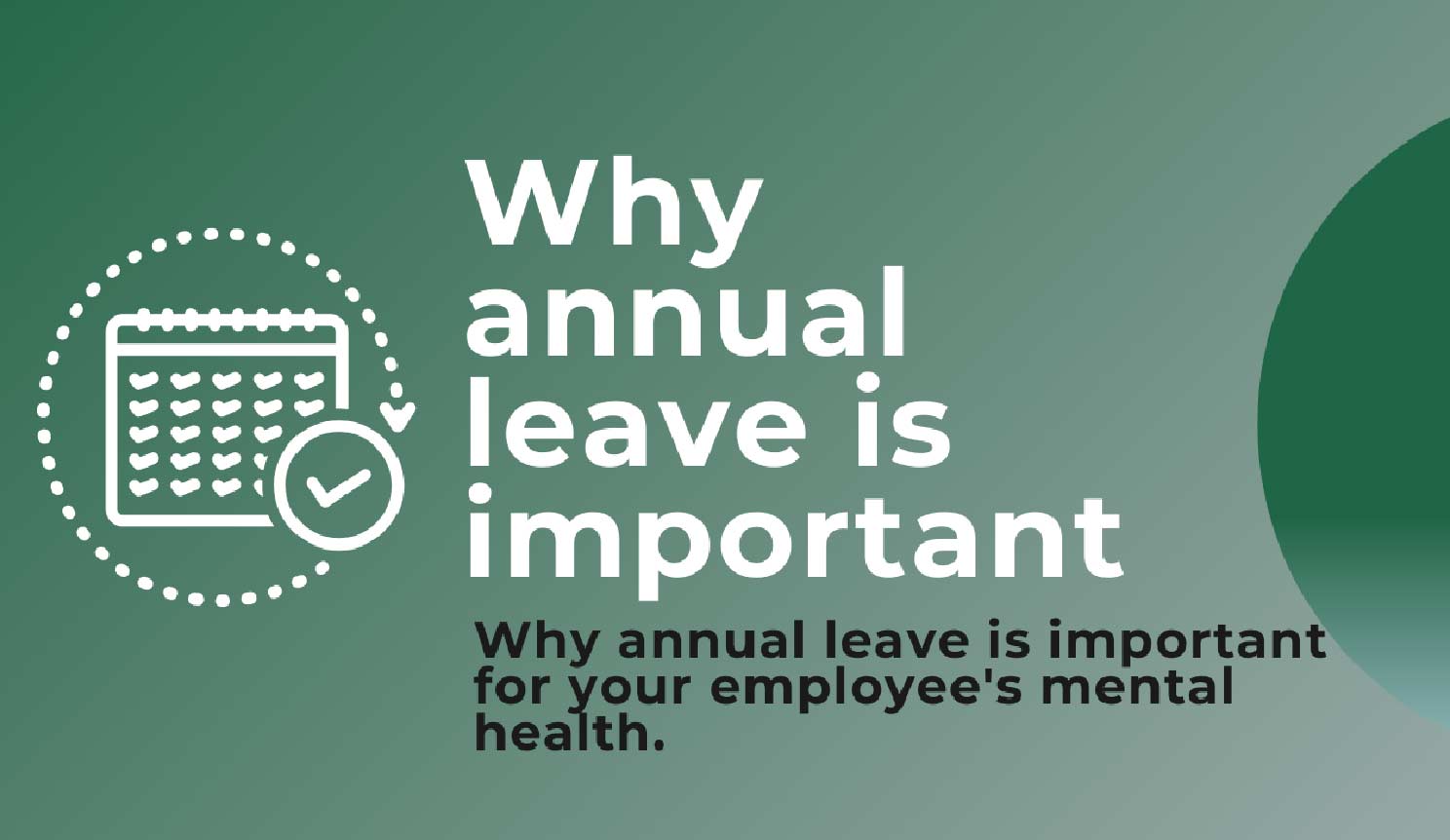Research from global health service Company Cigna in 2019 showed that 87% of managers have their work phone on outside of office hours and when on annual leave. It also showed that 37% of managers worked whilst on holiday. The results of the survey showed that 87% of workers interviewed felt stressed. Taking proper, uninterrupted annual leave is exceptionally important to mental health and well-being.
The importance of employers encouraging staff to take annual leave
Due to the coronavirus pandemic, employees were entitled to carry over up to 4 weeks annual leave from 2020 into the next 2 years. That coupled with employees not wanting to book leave because they are not going abroad on holiday means that many employees have a back-log of leave this year.
When staff build up annual leave, it creates three problems:
- Too many employees wanting to take it at the same time means there is often disappointment when a business cannot grant all requests;
- Employees may burn out
- Employees may want to carry leave over to the following year (with permission) and have too many days off the next year which can be disrupting for the business
The benefits of taking annual leave
Annual leave is vital to promote good physical and mental health in the workplace and will improve employees work-life balance. It allows individuals to take time to rest and re-energise which can result in stress reduction and improve mood, benefiting staff morale. Employees who take regular annual leave holidays can perform more efficiently and have higher motivation compared to those who do not.
The risks of having staff not take their annual leave (burnout)
The biggest risk in staff not taking their annual leave is that they burnout. Burnout is a state of emotional, physical, and mental exhaustion caused by excessive and prolonged stress. Employee burnout can prompt a multitude of problems in the workplace, resulting in a lack of engagement, drop in efficiency, increased absenteeism and more mistakes at work.
The biggest drivers of employee burnout:
- 31% – Lack of support or recognition from leadership
- 30% – Unrealistic deadlines or results expectations
- 29% – Consistently working long hours or on weekends
For more information and guidance on annual leave, download our free burnout guide
The risk of staff not taking annual leave (business management)
The main risks to businesses are:
- Increase in cost. If an employee leaves part way through the year they are entitled to be paid in lieu of accrued annual leave. This can quickly add up for employees who have not taken much or any leave in that year.
- Staff all wanting to take annual leave at the same time towards the end of the year can be demoralising if the business has to reject requests. It can also create staff shortages and increase pressure on other members of the team if you do grant time off for many people at the same time.
- An impact on planning and organisation of workflow.
What an employer can do (annual leave guide)
Employers can instruct staff when to take annual leave. So long as the employer serve double the amount of notice of the duration of the leave, they can force staff to use holiday at a time which suits the business.
The problem with forcing leave to be taken is that it can cause demoralisation and a lack of loyalty towards the business. Most employees want to take leave at a time which suits them and unless the business really must force it to be taken, we recommend allowing employees to select when to take their leave.
Employers should try to encourage employees to book leave regularly throughout the year. Sending reminders to book time off before a certain deadline can be helpful. Employers can also implement rules that half of the leave must be used before half of the calendar year to encourage staff to book and use it.
As well as sending formal notices of annual leave and informal reminders, we find an annual leave tracker or other online system helps. Where employees can clearly see the amount of leave they need to have they are more likely to book time off.
The complications of annual leave calculations
- Full time staff
- Part time staff
- Fluctuating hours
- Changes to weekly hours
Aside from complications in ensuring that your staff take their annual leave, there can be huge complications in calculating the amount of leave for full time, part time or term time only staff. Calculating annual leave becomes even more complicated when employees or workers complete varying hours of work each week.
Annual leave entitlements for employees is a minimum of 5.6 weeks per annum, equating to 28 days for a full time employee but pro-rata’d for part time staff. Employers can ask term time only staff to take their annual leave during school holidays but must ensure that they work out their pay correctly.
When an employee changes their weekly hours, annual leave should be calculated up to the point that their hours change and then re-calculated after. Annual leave for the full year should reflect the actual hours worked not an estimate of what it would have been had they continued on their previous hours of work, prior to a change.
For more guidance on annual leave, download our free annual leave how to guide.
Employment Law Solutions can help. We are an employment law service offering employment law advice for employers. With a wealth of knowledge in curing HR headaches for employers across the UK, Employment Law Solutions can offer comprehensive, stress-free, and pragmatic advice on employment law, including annual leave calculations. We offer 24/7, 365 guidance with a mission to help you get on with doing what you do best – running your business. Protecting your business will always be our main priority.
Annual leave in 2022
If you offer annual leave on a first-come, first-serve basis no doubt you will have an employee or two who will submit their request on the first day they can, but, there are additional factors to consider in 2022. Read more here




